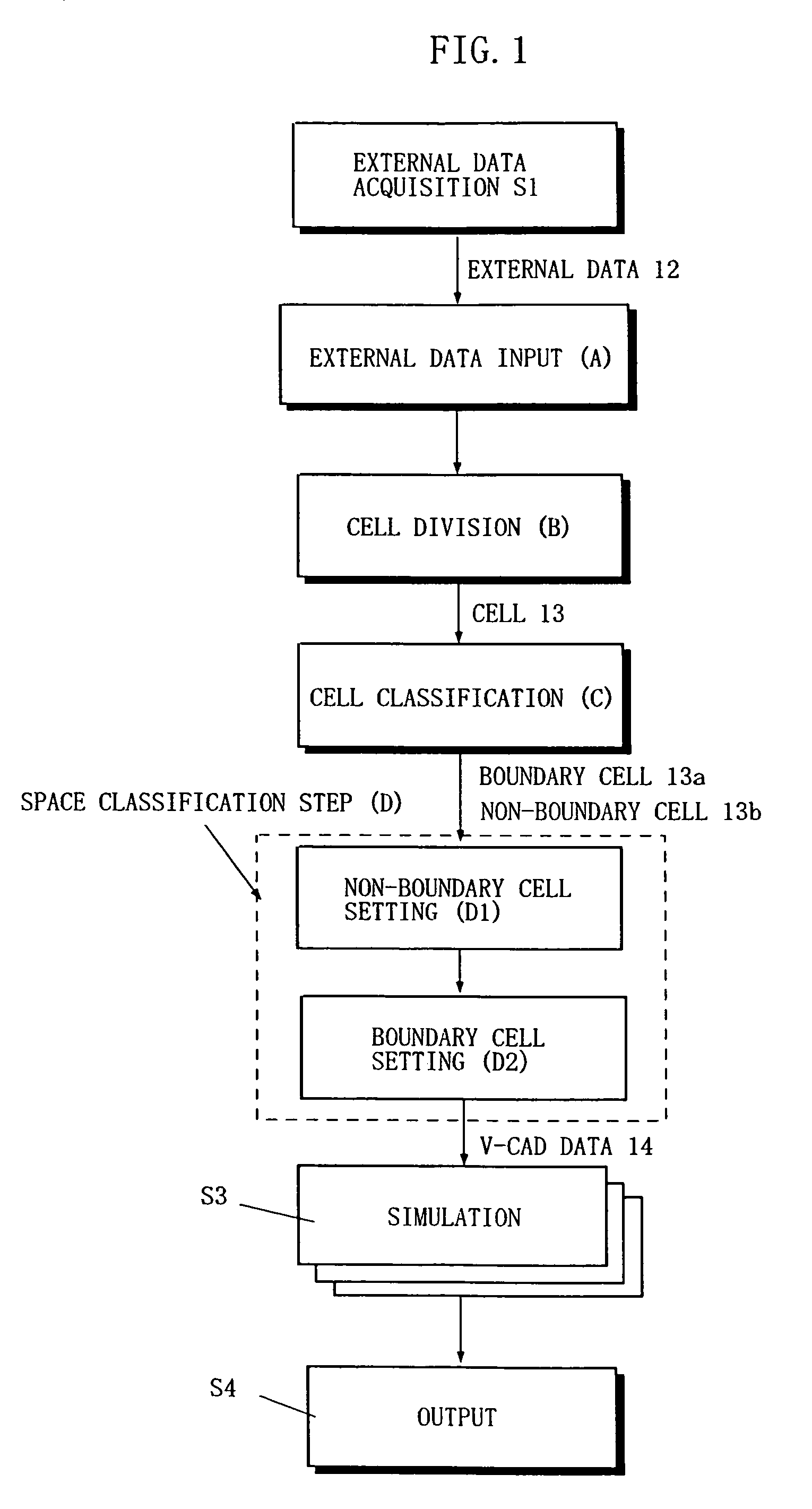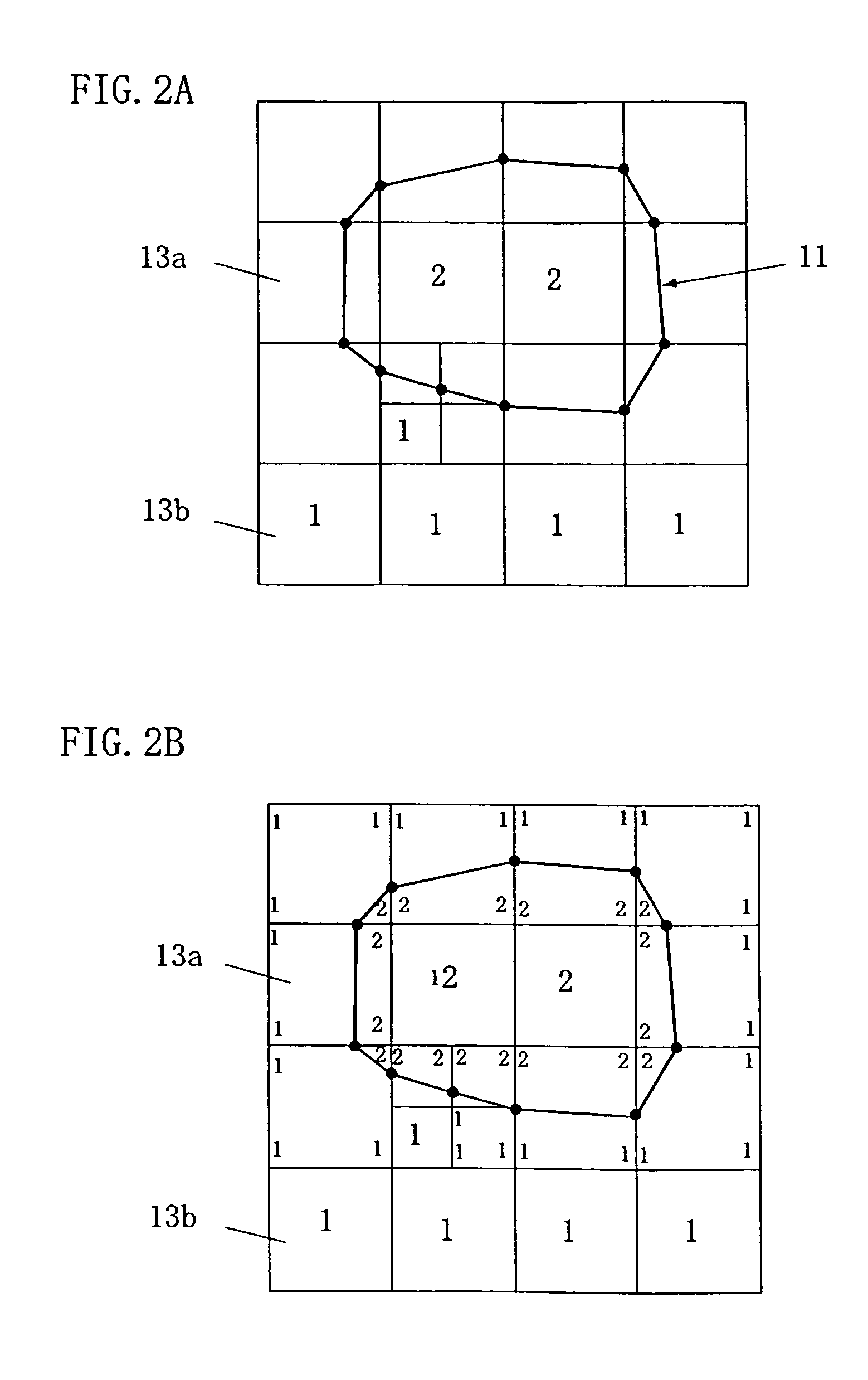Method and program for labeling multi material data
a multi-material data and labeling technology, applied in the field of multi-material data labeling method and program, can solve the problems of data loss, inability to apply the region growing (expanding) method to a case, and time-consuming, so as to improve processing speed, shorten processing time, and facilitate implementation into the computer
- Summary
- Abstract
- Description
- Claims
- Application Information
AI Technical Summary
Benefits of technology
Problems solved by technology
Method used
Image
Examples
embodiment
[0113]The following describes a specific example of the preferred embodiment of the present invention.
[0114]FIG. 3 shows the types of cells and the positions of cutting points. In FIG. 3, each square or grid represents a cell. The large cells and small cells are the representation of a two-level hierarchy. Further, black circles are cutting points, and line segments connecting the black circles indicate an inner cell face, that is, boundary data.
(Type of Cell)
[0115]The cells are classified into a non-boundary cell type, a boundary cell type, and a transit cell type. The term “non-boundary cell” refers to a cell without cutting point. The term “boundary cell” refers to a cell with one or more cutting points. The term “transit cell” refers to a cell larger in hierarchy than the other neighboring cells and having a cutting point on its boundary with the lower-level cells.
[0116]The boundary cell has a cutting point only on a cell edge or vertex. In many cases, the boundary cell has boun...
PUM
 Login to View More
Login to View More Abstract
Description
Claims
Application Information
 Login to View More
Login to View More - R&D
- Intellectual Property
- Life Sciences
- Materials
- Tech Scout
- Unparalleled Data Quality
- Higher Quality Content
- 60% Fewer Hallucinations
Browse by: Latest US Patents, China's latest patents, Technical Efficacy Thesaurus, Application Domain, Technology Topic, Popular Technical Reports.
© 2025 PatSnap. All rights reserved.Legal|Privacy policy|Modern Slavery Act Transparency Statement|Sitemap|About US| Contact US: help@patsnap.com



